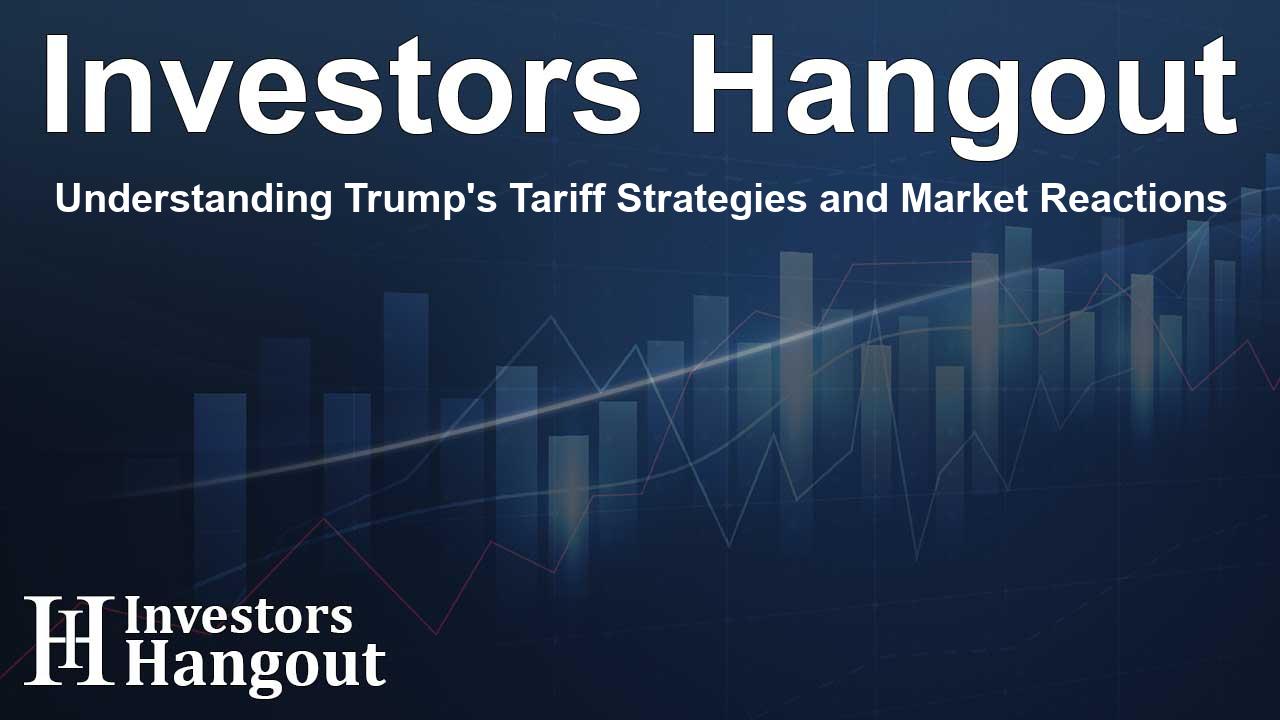Understanding Trump's Tariff Strategies and Market Reactions

Trump's Tariff Plans: An Overview
Recently, former President Donald Trump announced intentions to impose substantial tariffs on major trading partners, specifically targeting Canada, Mexico, and China. This move appears to be aligned with his "America First" campaign ideals, with tariffs potentially signaling a new chapter in U.S. trade policy.
According to Trump, starting from his reelection inauguration date, a 25% tariff will be levied on imports from Canada and Mexico until these countries enhance their efforts to combat issues like drug trafficking. This could lead to significant shifts in trading dynamics, as existing agreements may be challenged by these moves.
On the other hand, the conversation surrounding tariffs on Chinese goods is evolving as well, with Trump proposing an additional 10% tariff on imports from China. This measure raises questions regarding the feasibility and effectiveness of such tariffs, particularly in light of previous discussions on revoking China’s most-favored-nation status.
The Potential Impact on Trade Relations
The implications of Trump's tariff strategy are vast, especially for the economies of Mexico and Canada. In particular, the U.S. represents a critical market, absorbing over 83% of Mexican exports and 75% of Canadian goods. Such tariffs could not only disrupt these countries' economies but also the intricate web of supply chains, especially for manufacturers in Asia that depend on Mexican production.
Trump's rhetoric emphasized the enforcement of tariffs in response to issues like drug trafficking and illegal immigration. He claims that until China takes significant steps to resolve these concerns, tariffs will be imposed on their products as well.
Analysts Weigh In on the Situation
Market analysts are closely observing these developments. Some believe that Trump may use the announced tariffs as leverage during negotiations with these countries rather than actual enforcement. For instance, one analyst noted that the tariff threat could echo previous situations where similar tactics led to market uncertainties.
Market Reactions and Expert Opinions
Investors had previously anticipated a smooth path for Trump’s strategies following positive developments elsewhere. However, the sudden introduction of tariffs may slow market confidence, creating parallels to past cabinet decisions that resulted in market hesitance. Experts suggest that while there may be a significant gap between the threat and implementation of these tariffs, their potential impact on currency values and market sentiment is worth considering.
The Resilience of Financial Markets
Despite the unsettling news, Asian markets displayed notable resilience amidst the announcements, perhaps hinting at a broader strategy from Trump that does not translate into excessive tariffs. According to a report, even with the proposed 25% tariffs primarily affecting products tied to immigration, essential imports such as energy are less likely to face such harsh contributions due to their critical status in U.S.-Canada trade.
Negotiation Tactics and Future Considerations
Various banks and financial institutions are interpreting these tariff threats as a negotiation strategy. Some experts highlight that while the tariffs get attention, the ultimate objective may be to extract concessions beneficial to the U.S. economy. Observers anticipate that both Canada and Mexico may show a willingness to negotiate on critical issues to avoid the implementation of these tariffs.
In summary, as these situations unfold, the international trading community is bracing itself for possible changes. The collaboration or resistance from Canada and Mexico will likely shape the trajectory of these tariff strategies moving forward, alongside the responses from global financial markets.
Frequently Asked Questions
What are the proposed tariffs by Trump?
Trump has proposed a 25% tariff on imports from Canada and Mexico, along with a 10% tariff on imports from China.
How might these tariffs affect trade relationships?
The tariffs could disrupt established trade agreements and significantly impact the economies of the involved countries.
What is the reasoning behind these tariffs?
The tariffs are suggested as a means to combat drug trafficking and illegal immigration, while also negotiating trade terms beneficial to the U.S.
Are analysts concerned about the impact of these tariffs?
Yes, many analysts express concern that these tariffs could lead to market instability and economic repercussions for trading partners.
What is the general market reaction to these announcements?
While some markets have shown resilience, uncertainty remains high, as investors assess the potential real-world implications of the tariffs.
About The Author
Contact Dylan Bailey privately here. Or send an email with ATTN: Dylan Bailey as the subject to contact@investorshangout.com.
About Investors Hangout
Investors Hangout is a leading online stock forum for financial discussion and learning, offering a wide range of free tools and resources. It draws in traders of all levels, who exchange market knowledge, investigate trading tactics, and keep an eye on industry developments in real time. Featuring financial articles, stock message boards, quotes, charts, company profiles, and live news updates. Through cooperative learning and a wealth of informational resources, it helps users from novices creating their first portfolios to experts honing their techniques. Join Investors Hangout today: https://investorshangout.com/
The content of this article is based on factual, publicly available information and does not represent legal, financial, or investment advice. Investors Hangout does not offer financial advice, and the author is not a licensed financial advisor. Consult a qualified advisor before making any financial or investment decisions based on this article. This article should not be considered advice to purchase, sell, or hold any securities or other investments. If any of the material provided here is inaccurate, please contact us for corrections.
